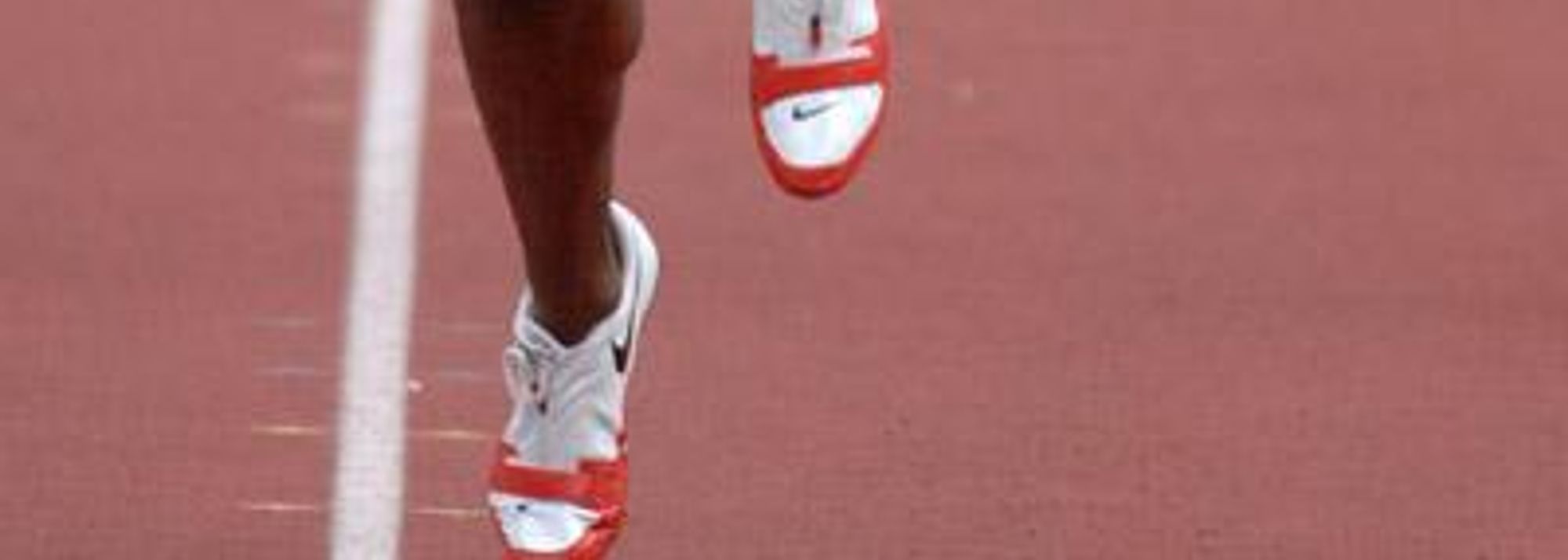Collegiate sprint standout Walter Dix at the Texas Relays (© Kirby Lee)
Sacramento, California, USAThis year’s National Collegiate Championships, familiarly the NCAAs, which take place from 6 to 9 June will be the first hard look at the next generation of young American athletes, some of whom will undoubtedly be on the USA for Osaka, and more of whom will make it to Beijing for the Olympic Games.
Two developments of recent years have robbed the meet of some of its lustre: (1) extensive recruiting of undergraduates by shoe companies offering professional contracts, and (2) a superfluous regional qualifying system which discourages doubling and through injury or mishap usually eliminates a few stars.
Nevertheless, there is plenty to look forward to, starting with Walter Dix, Natasha Hastings, and Donald Thomas, any one of which might well reach a podium in Osaka.
In his NCAA debut here two years ago, Dix won the 100m and finished fourth in the 200 – behind Tyson Gay, Wallace Spearmon and Xavier Carter. In 2006, he was second in the 100, and won the 200 both indoors and out. This year he swept the NCAA indoor 60m and 200m, and has posted PBs of 10.05 and 19.69 outdoors.
In the 100 here, Dix, who competes for Florida State University, should be challenged by Travis Padgett of Clemson University, who ran a windy early-season 10.05, and Trindon Holliday of Louisiana State, who has run 10.02 and 10.07 this spring.
In the 200, Dix’s 19.69 is six metres ahead of the field – ‘nuf said.
Hastings learns to manage her time better
Natasha Hastings is just as dominant in the women’s 400, with a best this year of 50.23 and four other marks under 51.10; her nearest competitor, Shana Cox, has run 51.38.
Hastings’ emergence this year from 51.34 in 2005 and 51.45 in 2006 has not been as sudden as it may seem, according to her coach, the formidable Curtis Frye of the University of South Carolina. She is a pre-medical student with a heavy load of courses and an average of 3.8 (of a possible 4.0). In addition, she suffered a series of injuries in 2005 and 2006.
This year, says Frye, “She has learned to manage her time better, and she is very committed. During her Christmas vacation, she drove the 800km round trip from her home in Atlanta to work out at the University with me four times. She could have done the workouts at home, but she wanted the intensity of doing them on our home track.”
Hastings will also anchor South Carolina’s 4x100 and 4x400 relay teams.
Dix and Hastings are both third-year collegians who are expected to resist the urge to turn professional and complete in next year’s NCAA meet.
Currently on top of the world
Donald Thomas is a Bahamian (23yrs on 1 July) who up until this year always was more interested in playing basketball than high jumping.
This year, though, he won the indoor NCAA with a PBH of 2.33m, and outdoors he has cleared 2.34 to head the world list so far. He seems to have the temperament needed to jump his best in big meets. He’ll be tested by Scott Sellers, who jumped 2.33 last month, and Andra Manson, who set a PB of 2.32 in 2004, but is consistent at 2.30 and appears to have the ability go higher.
Here’s a quick rundown of some of the other most interesting events in the four-day meeting:
-- The men’s 1500 has a dozen entrants who’ve run between 3:40.21 and 3:42.00. Any one of them could win, but most will be watching tiny(1.58) Leonel Manzano, a Mexican-American from the University of Texas who won here two years ago in 3:37.13, and Lopez Lomong of Northern Arizona University, who spent 10 years as a Sudanese refugee camp in Kenya before coming to the United States as one of “the boys from ‘Sudan.” Both have strong finishing kicks.
-- Favoured in the men’s 10,000m should be young Galen Rupp of the University of Oregon, who set a new collegiate record of 27:33.48 and come in 22 seconds faster than his nearest competitor.
-- The men’s Discus Throw, which has four men with 2007 marks of better than 62.50 – Greg Garza (63.69), Niklas Arrhenius (63.18), Michael Robertson (62.71), and Adam Kuehl (62.53).
-- In the women’s sprints, Ebonie Floyd of the University of Houston comes in with the fastest times in both the 100 (10.15) and 200 (22.32). But with the depths of both fields she could end up without a medal in either.
-- Sally Kipyego (KEN) of Texas Tech should sweep the women’s 5000m and 10,000m easily. In the 5000, her best time this year of 15:19.72 is 28 seconds faster than challenger Michelle Sikes, and in the 10,000m her 31:56.72 is 33 seconds better than Amy Hastings' 32:30.37.
-- One of the best matchups of the meet is in the 400m Hurdles, where Nickeisha Wilson of Jamaica and Louisiana State, with a best of 55.20, will face South Alabama’s Ajoke Odumosu (NIG), who’s run 55.37. Odumosu’s coach, 1968 Olympic 400m champion Lee Evans, thinks she can run a lot faster.
-- The women’s Hammer Throw shapes up as a titanic contest (for American collegians, atleast) between Jenny Dahlgren, with a season’s-best of 72.94 and Brittney Riley, at 72.51.
James Dunaway for the IAAF
Click on the following links for further information:



